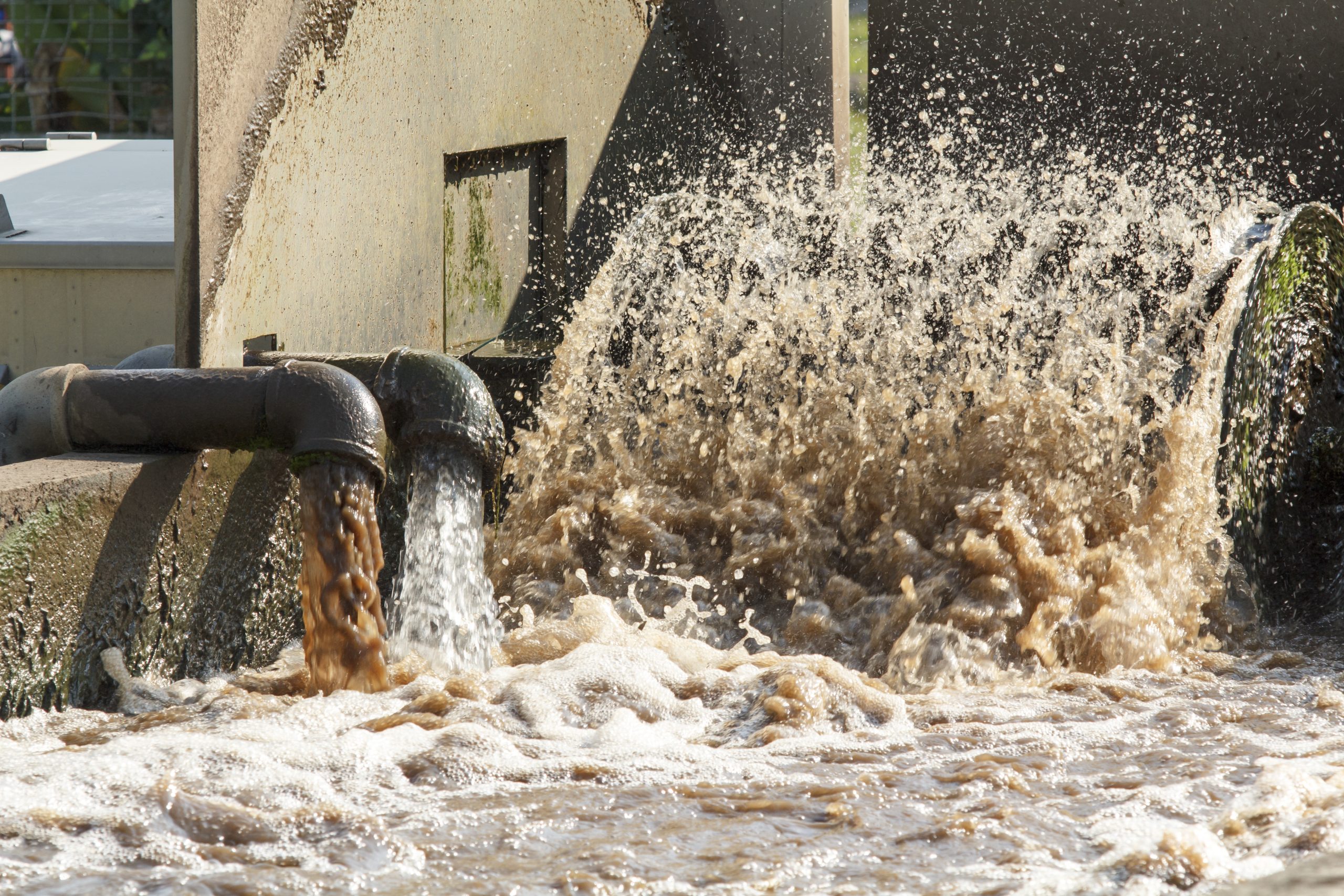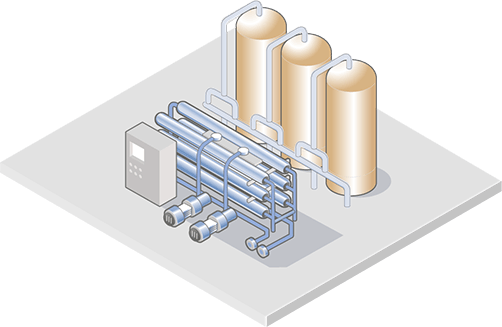Industrial Waste Water Treatment-- Industrial-Grade Water Filtration and Filtration Solutions
Obstacles and Solutions in Hazardous Waste Water Treatment
The treatment of commercial wastewater presents a multifaceted variety of obstacles, ranging from strict regulative conformity to the intricacies of cost administration and technical constraints. The variability in waste composition additionally makes complex the effectiveness of conventional treatment techniques, usually resulting in escalated operational expenditures. Nonetheless, arising solutions such as advanced oxidation processes and ingenious funding designs reveal assurance in addressing these issues. As markets face the requirement for sustainable techniques, the concern stays: what methods will inevitably lead to a balance between compliance, cost-efficiency, and ecological responsibility?
Regulatory Conformity Difficulties
How can commercial centers navigate the complicated landscape of regulatory compliance in wastewater therapy? The regulatory structure governing wastewater administration is complex, frequently differing by jurisdiction and type of sector.
To successfully take care of these compliance difficulties, facilities ought to apply robust tracking and reporting systems that make certain real-time data collection and analysis. Normal audits and threat assessments can determine possible conformity gaps, permitting aggressive adjustments in treatment processes. Staff member training programs focusing on regulatory understanding and finest methods are important to cultivate a society of compliance within the organization.
Additionally, involving with regulatory firms can offer beneficial insights and make clear ambiguous guidelines. Facilities might likewise gain from talking to ecological experts that specialize in wastewater treatment conformity, ensuring that they remain informed of developing guidelines. By taking on these techniques, commercial centers can not only satisfy conformity needs but likewise boost their functional effectiveness and ecological stewardship.
Cost and Economic Barriers
Browsing governing conformity in wastewater treatment typically offers significant monetary difficulties for commercial centers. The prices associated with executing needed therapy technologies, maintaining compliance with strict guidelines, and handling functional expenditures can be daunting. Numerous organizations deal with high preliminary capital investment for the construction or upgrading of wastewater treatment plants, which may strain budgets, particularly for little and medium-sized enterprises.
Furthermore, ongoing operational costs, including maintenance, labor, and chemical inputs, add to the economic worry. The changability of fluctuating power prices and the possible demand for added financial investments to fulfill advancing laws aggravate these financial stress. Oftentimes, the lack of financial motivations or assistance from government bodies makes it a lot more tough for organizations to validate investments in advanced therapy systems.
Furthermore, the economic viability of wastewater therapy options is commonly questioned, specifically for industries with tight revenue margins. Therefore, it is crucial for industrial facilities to check out economical methods, such as adopting cutting-edge financing options, involving in partnerships, and leveraging arising technologies that can aid alleviate these economic barriers while ensuring conformity with environmental requirements.

Technological Limitations
Various technological constraints prevent the efficiency of industrial wastewater treatment procedures. One considerable challenge is the insufficiency of existing therapy innovations to address intricate pollutants. Numerous conventional approaches, such as triggered sludge and chemical rainfall, battle with the removal of arising contaminants, consisting of microplastics and pharmaceuticals. This constraint typically results in the discharge of improperly treated water, which can have destructive ecological impacts.
In addition, the scalability of treatment innovations poses a difficulty. While some innovative techniques, like membrane layer filtration or sophisticated oxidation, reveal guarantee in regulated environments, their application on a bigger scale can be excessively pricey and technically difficult. Upkeep and operational complexities better complicate the adoption of these systems, particularly for smaller sized industries with limited technical expertise.
The integration of real-time tracking modern technologies also remains insufficient in many therapy facilities. Without effective tracking systems, operators can not sufficiently evaluate treatment effectiveness or identify possible failures, leading to inconsistent effluent quality. Check This Out Addressing these technical constraints via research study and advancement, together with investment in innovative solutions, is crucial for boosting the efficacy of commercial wastewater therapy and making sure regulative compliance.
Irregularity in Waste Make-up
In the world of industrial wastewater treatment, the irregularity in waste structure presents a formidable obstacle. Industries produce wastewater with diverse characteristics, affected by aspects such as production procedures, raw products, and operational techniques. This diversification complicates the therapy procedure, as conventional systems often battle to successfully address the wide variety of pollutants existing.
For example, wastewater from food handling may contain high degrees of raw material, while effluents from chemical manufacturing can include heavy steels and dangerous materials. This variation necessitates versatile therapy techniques to ensure conformity with environmental guidelines and protect public health and wellness. Additionally, changes in waste composition can happen over time, affected by changes in production schedules, maintenance tasks, or the introduction of new items.

Cutting-edge Treatment Solutions
Cutting-edge treatment options are important for resolving the complexities of commercial wastewater management. Standard approaches typically drop short in effectively eliminating a vast array of impurities, specifically in facilities with varied effluent streams. Current developments concentrate on incorporating advanced innovations to boost treatment effectiveness and sustainability.
One encouraging strategy is using sophisticated oxidation procedures (AOPs), which utilize powerful oxidants to deteriorate natural toxins. AOPs, consisting of photocatalysis and ozonation, can considerably minimize hazardous materials and improve effluent quality. Furthermore, membrane bioreactor (MBR) innovation has actually obtained grip, incorporating biological treatment with membrane filtration, resulting in premium effluent and minimized impact.
An site here additional cutting-edge remedy is the execution of source recuperation systems. Strategies like anaerobic food digestion not just deal with wastewater yet additionally generate biogas, which can be used as a renewable resource resource. In addition, the fostering of expert system and artificial intelligence designs can enhance treatment processes by predicting variants in wastewater make-up, consequently improving operational efficiency.
These cutting-edge options not only address regulatory conformity however also advertise ecological sustainability, paving the way for an extra durable and efficient industrial environment.
Verdict
In verdict, addressing the challenges of industrial wastewater therapy calls for a complex approach that integrates regulatory compliance, expense monitoring, and technical innovations. A commitment to continuous improvement Extra resources in treatment methods will eventually add to the reliable monitoring of commercial wastewater and ecological protection.
The treatment of industrial wastewater presents a multifaceted range of difficulties, varying from rigorous governing conformity to the details of cost management and technological limitations. Industrial Waste Water Treatment.Browsing regulatory compliance in wastewater treatment frequently provides considerable monetary challenges for industrial centers. Addressing these technical constraints via study and advancement, together with investment in innovative solutions, is crucial for boosting the efficiency of commercial wastewater treatment and guaranteeing regulatory conformity
Wastewater therapy facilities should invest in robust surveillance systems and adaptable therapy innovations capable of accommodating differing influent attributes.In final thought, dealing with the challenges of commercial wastewater therapy needs a multifaceted approach that incorporates regulative conformity, expense administration, and technical innovations.